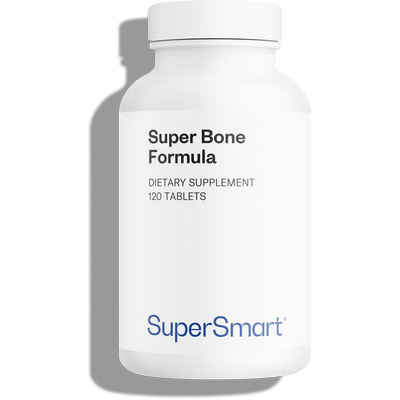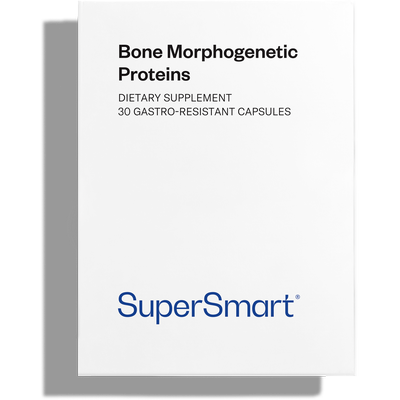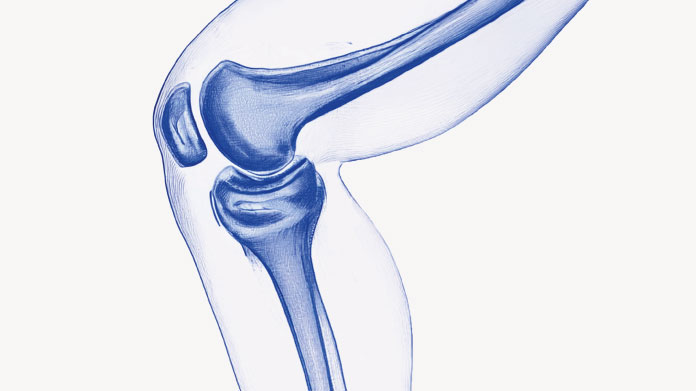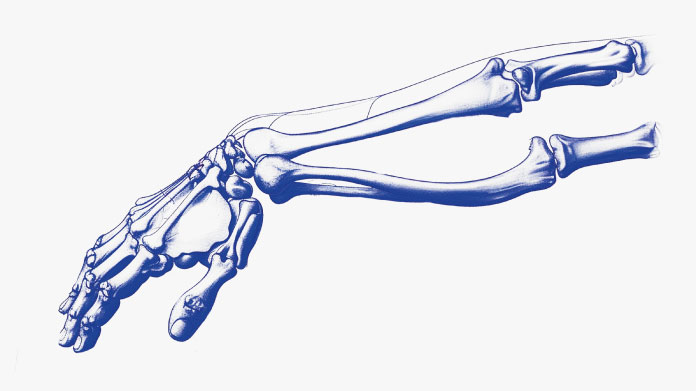Osteoporosis: which natural treatments can help strengthen your bones?
A very common disorder among Western populations, especially women, osteoporosis increases the risk of fractures. Fortunately, there are steps you can take to strengthen your bones.

Osteoporosis: a predominantly female affliction
A disease of the skeleton, osteoporosis is characterised by a decrease in bone mass and deterioration of the internal structure of bone tissue. As a result, it has a weakening effect on bones.
Long reported anecdotally, osteoporosis has become a public health problem as life expectancy has increased. In fact, it’s thought that almost 40% of women in their mid-60s suffer from osteoporosis, with that figure rising to 70% after the age of 80!
And this is a key characteristic of osteoporosis: it is 2 to 3 times more common in women than in men. This is because the hormonal disruption caused by the menopause impairs the process of bone remodelling, thus promoting the onset of osteoporosis (1).
In practice, bone remodelling balance is governed by various endogenous factors (2):
- sex hormones, particularly oestrogen, hence the high incidence of osteoporosis in post-menopausal women;
- BMPs, proteins which promote bone reformation;
- IGFs, growth factors which stimulate activity of osteoblasts (bone cells responsible for the synthesis and mineralisation of the bone matrix);
- TGFs, cytokines involved in the remodelling process.
What causes osteoporosis?
While osteoporosis is fundamentally an age-associated problem, we now know that some individuals may be genetically predisposed to this bone disease (3).
Furthermore, its development may be promoted by a number of epigenetic factors:
- a sedentary lifestyle: the less the skeleton is challenged, the weaker it becomes;
- weight issues: it’s been shown that a body mass index of less than 19 and more than 25 promotes osteoporosis problems;
- alcohol, smoking and caffeine: they all promote osteoporosis by, amongst others, encouraging the elimination of calcium in urine;
- a lack of vitamin D.
How can osteoporosis be prevented?
While there are drug treatments and natural remedies for combatting osteoporosis (discussed later in this article), prevention is always best when it comes to this bone disease (4).
And the first such preventive measure is exercise (5):
- it promotes an increase in bone density or at the very least, stems the loss of it;
- it improves motor control thus helping to reduce the risk of falling which is the main cause of osteoporotic fractures (femur, hip, wrist, etc.).
In addition, by supporting normal skeletal function, all the plants recognised as being good for the bones and joints (wild chicory, Bambusa arundinacea, common sage, yellow sweet clover, etc.), are likely to be effective at helping to prevent osteoporosis.
Given that deficiency in vitamin D is also one of the main epigenetic factors in promoting the onset of osteoporosis, and that 80% of seniors are indeed lacking in this vitamin, supplementation with vitamin D and calcium is strongly recommended all year round apart from in the summer (6).
As a reminder, those over 50 need 1200 mg of calcium a day.
Treatments for osteoporosis
Osteoporosis drugs
Several drugs from the bisphosphonate family are currently used across the globe to treat osteoporosis, almost always in combination with a course of vitamin D, and sometimes with calcium.
These drugs are made from synthetic molecules that mimic the pyrophosphates found in bones. But unlike pyrophosphates, biphosphonates contain a nitrogen group which inhibits an enzyme essential to osteoclast function. As osteoclasts are responsible for resorbing old bone, inhibiting osteoclast function helps to slow down and even prevent the remodelling process that causes osteoporosis (7).
Natural remedies for osteoporosis
While a number of studies have shown promising results for several natural osteoporosis remedies, the benefits of all the substances and plants investigated have yet to be evaluated by the international scientific community.
However, as things stand, the most widely-studied and promising natural remedies are:
- ipriflavone: a soya isoflavone, this phytoestrogen has shown encouraging results in combatting osteoporosis in menopausal women (8);
- vitamin K: studies have identified a correlation between low intake of vitamin K and weak bone density (9);
- DHEA: this steroid hormone, the body’s production of which declines with age, may help to preserve bone mass (10);
- magnesium: deficiency in this mineral also appears to play a role in the development of osteoporosis (11);
- Eucommia ulmoides or Du-Zhong: a plant from the traditional Chinese pharmacopeia long used for treating osteoporosis is now being widely studied as a potential natural remedy (12).
Indeed, the supplement Super Bone Formula contains a large number of the compounds mentioned.
It goes without saying that whichever approach you take to treating osteoporosis, it is always best to discuss it first with your doctor so that he or she can confirm your chosen route.
SUPERSMART’S TARGETED FORMULATIONS:
References
- https://www.inserm.fr/dossier/osteoporose/
- LINKHART, Thomas A., MOHAN, Subburaman, et BAYLINK, David J. Growth factors for bone growth and repair: IGF, TGFβ and BMP. Bone, 1996, vol. 19, no 1, p. S1-S12.
- POURESMAEILI, Farkhondeh, KAMALIDEHGHAN, Behnam, KAMAREHEI, Maryam, et al.A comprehensive overview on osteoporosis and its risk factors. Therapeutics and clinical risk management, 2018, vol. 14, p. 2029.
- TUCKER, Katherine L. Osteoporosis prevention and nutrition. Current Osteoporosis Reports, 2009, vol. 7, no 4, p. 111-117.
- WHALEN, R. T., CARTER, D. R., et STEELE, C. R. Influence of physical activity on the regulation of bone density. Journal of biomechanics, 1988, vol. 21, no 10, p. 825-837.
- LIPS, Paul et VAN SCHOOR, Natasja M. The effect of vitamin D on bone and osteoporosis. Best practice & research Clinical endocrinology & metabolism, 2011, vol. 25, no 4, p. 585-591.
- https://www.vidal.fr/maladies/appareil-locomoteur/osteoporose.html
- ALEXANDERSEN, Peter, TOUSSAINT, Anne, CHRISTIANSEN, Claus, et al.Ipriflavone in the treatment of postmenopausal osteoporosis: a randomized controlled trial. Jama, 2001, vol. 285, no 11, p. 1482-1488.
- FUSARO, Maria, CIANCIOLO, Giuseppe, BRANDI, Maria Luisa, et al.Vitamin K and osteoporosis. Nutrients, 2020, vol. 12, no 12, p. 3625.
- KIRBY, David J., BUCHALTER, Daniel B., ANIL, Utkarsh, et al.DHEA in bone: the role in osteoporosis and fracture healing. Archives of Osteoporosis, 2020, vol. 15, no 1, p. 1-11.
- CASTIGLIONI, Sara, CAZZANIGA, Alessandra, ALBISETTI, Walter, et al.Magnesium and osteoporosis: current state of knowledge and future research directions. Nutrients, 2013, vol. 5, no 8, p. 3022-3033.
- ZHANG, R., LIU, Z. G., LI, C., et al.Du-Zhong (Eucommia ulmoides Oliv.) cortex extract prevent OVX-induced osteoporosis in rats. Bone, 2009, vol. 45, no 3, p. 553-559.
Keywords






